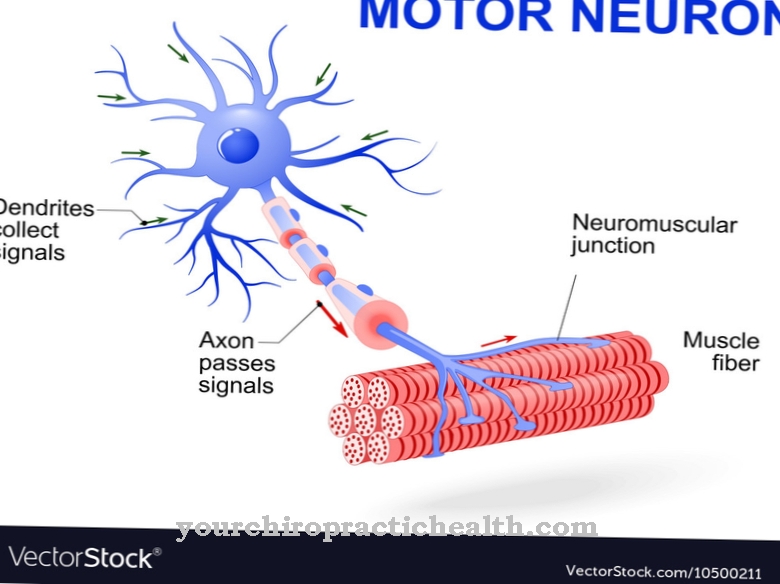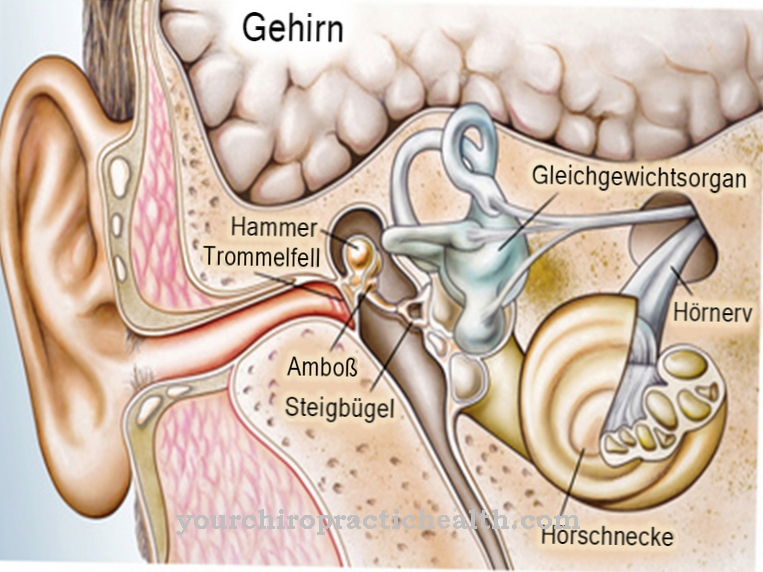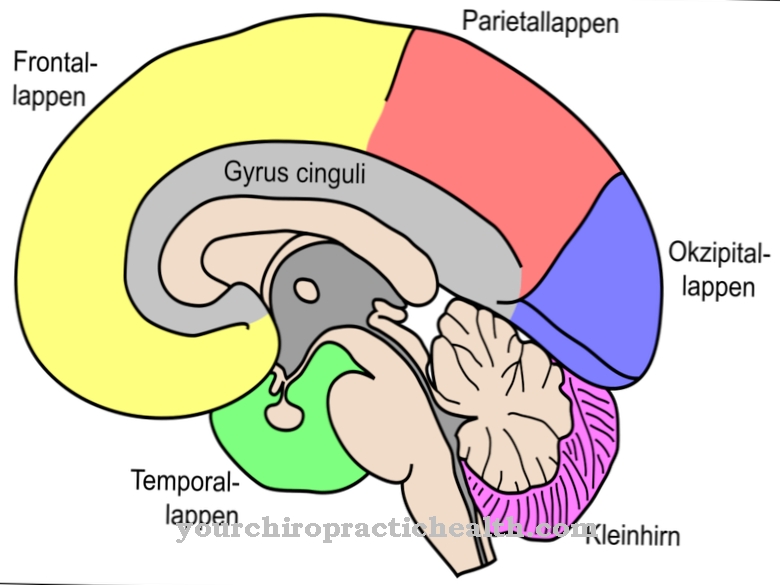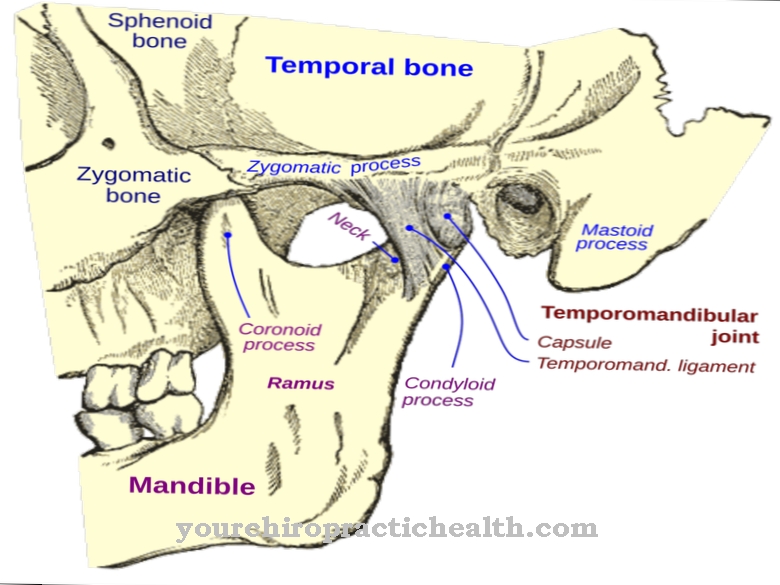Of the Musculoskeletal system comprises a complex organ system of the body, which not only enables the physical shape to be secured, but also supports posture and, last but not least, physical movement and locomotion. Together with the supporting apparatus, the passive musculoskeletal system, the active musculoskeletal system of the body forms a functional unit.
What is the musculoskeletal system?
When it comes to the musculoskeletal system, a distinction is primarily made between the passive and active musculoskeletal system, although the differentiation is not always clearly made, since muscles are also mobile due to their contraction.
The active musculoskeletal system, which is primarily used for movement (mobility) of the body, includes the skeletal muscles, and auxiliary and appendix organs are also part of the active musculoskeletal system: tendons, fascia, tendon sheaths and bursa belong to these so-called auxiliary organs of the active musculoskeletal system. As a supporting apparatus, the passive musculoskeletal system includes the skeleton and the associated parts, such as bones, joints, cartilage, ligaments and intervertebral discs.
Anatomy & structure
The passive musculoskeletal system primarily enables the body to be shaped and supported. The musculoskeletal system consists of a fixed part and the moving organs. The bony skeleton enables the necessary shaping and support of the body. Movement, in turn, is made possible by the skeletal muscles, which are part of the active musculoskeletal system.
The tendons, which on the one hand are firmly attached to the bone, but on the other hand are also anchored in the respective muscle, act as power transmitters. If necessary, the pulling direction of some tendons is changed by ligaments. These also have the task of securing and strengthening joints under stress.
Function & tasks
The skeleton, the most important part of the musculoskeletal system, is made up of differently shaped bones. These include flat bones or long bones as well as other types of bone that are partially fused together. They not only maintain the shape and mobility of the body, but also protect the internal organs and thus enable their functionality (example: the skeleton of the chest, without which breathing could not take place). Joints connect the bones to one another and thus determine the range and direction of movement of the bones.
The skeletal muscles, which are part of the active musculoskeletal system, serve as a connecting link between two different bones and are connected to the bone by means of tendons via at least one joint. When a muscle shortens, the two bones in the joint are pulled towards each other. Muscles themselves can only contract (contract), for their stretching back into the starting position one or more muscles are then required, which in turn start on the other side of the joint and exercise the opposite direction of movement; medicine calls this type of muscle an antagonist. But there are also muscles that are divided into two or more parts and attach to different places, even to different ends of the bones. Prominent examples of this are biceps, triceps, or quadriceps.
In order to convert the force that the muscles develop into bone movement, the two functional assemblies must be connected to one another. This is ensured by the tendons, which consist of firm yet collagenous and flexible connective tissue. The fibers of the tendons are arranged parallel to the direction of pull. The tendons in the muscle have grown together directly with the muscle fibers and have their origin in the protrusions or roughened areas of the bone. In addition to tendons and tendon plates as well as tendon sheaths, the ligaments that are part of the musculoskeletal system are also important. They usually consist of collagen fibers, sometimes also of elastic connective tissue.
Their job is to support the joints or to prevent the bones from moving against each other and thereby prevent overstretching of tendons or muscles. The ligaments are either found directly in the joints or around them. The bursae are also part of the musculoskeletal system: like a protective cushion, they are to be found in those places that can pose a potential danger to tendons, in order to protect them from chafing and damage. Bursae are smaller pads of skin that are placed under the tendon on the vulnerable areas and filled with fluid. This allows the tendon pressure to be evenly distributed.
Diseases
If there is pain in the lower back, the knees are no longer fully resilient or the joints are affected, then we generally speak of diseases of the musculoskeletal system. These belong to one of the most common complaints and describe all diseases that affect bones, joints and muscles. The human musculoskeletal system forms the framework of the body. Its pillars enable support, balance, movement and, in the truest sense of the word, "progress". And so diseases of the musculoskeletal system are perceived as a major limitation, as they very often have a sensitive effect on mobility, freedom of movement and the ability to bear stress in daily life.
The body is not only held together by the musculoskeletal system, but also supported and carried throughout our life. The passive parts of the musculoskeletal system include bones, cartilage and joints; it only becomes active through the skeletal muscles. Osteoporosis, which often affects women after the menopause, is one of the common diseases of the musculoskeletal system. Commonly referred to as bone loss, this is a breakdown (necrosis) of the bone substance, which can only affect individual parts of the musculoskeletal system (e.g. pelvis or thigh). As the disease progresses, the risk of spontaneous bone fractures is inevitably increased and healing after such is more difficult.
A calcium-rich diet and the adequate intake and formation of vitamin D are of outstanding importance here in order to support bone remineralization. As with osteoporosis, another disease of the musculoskeletal system, soft tissue rheumatism (fibromyalgia), mainly affects women. Hardened muscles and pain in the muscles are just some of the symptoms of this mostly chronic disease. Osteoarthritis, which affects the joints, is another common disease of the musculoskeletal system. In the form of pain and stiffness in the affected joints, osteoarthritis is not infrequently caused by incorrect loading and overuse of the affected joints. While osteoarthritis is a degenerative process and joint wear and tear, inflammation in the joints - also known as arthritis - is associated with swelling, reddening, overheating and joint effusion.
In addition to purulent arthritis, which is a serious damage to the affected joint, there are also some sub-forms, the most common of which is rheumatoid arthritis, also known as rheumatoid arthritis. This disease can occur at a young age. Musculoskeletal disorders include a variety of other ailments. Since there are also possible points of contact with all areas of the body, not only orthopedists are involved diagnostically and therapeutically, but also oncologists, neurologists, family doctors, sports and pain medicine specialists, as well as osteopaths, physiotherapists and masseurs, for example.
Typical & common bone diseases
- osteoporosis
- Bone pain
- Broken bone
- Paget's disease













.jpg)

.jpg)
.jpg)











.jpg)